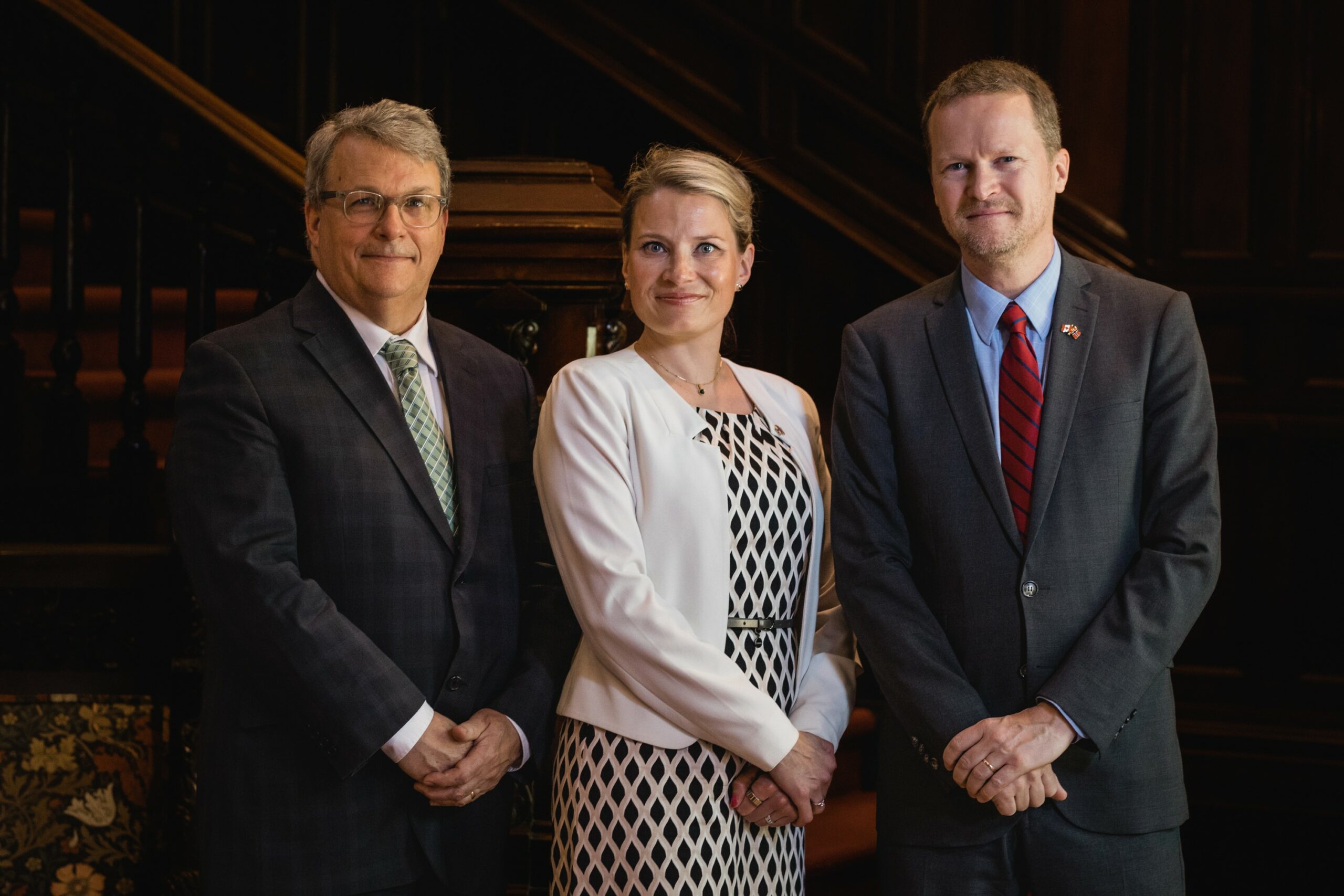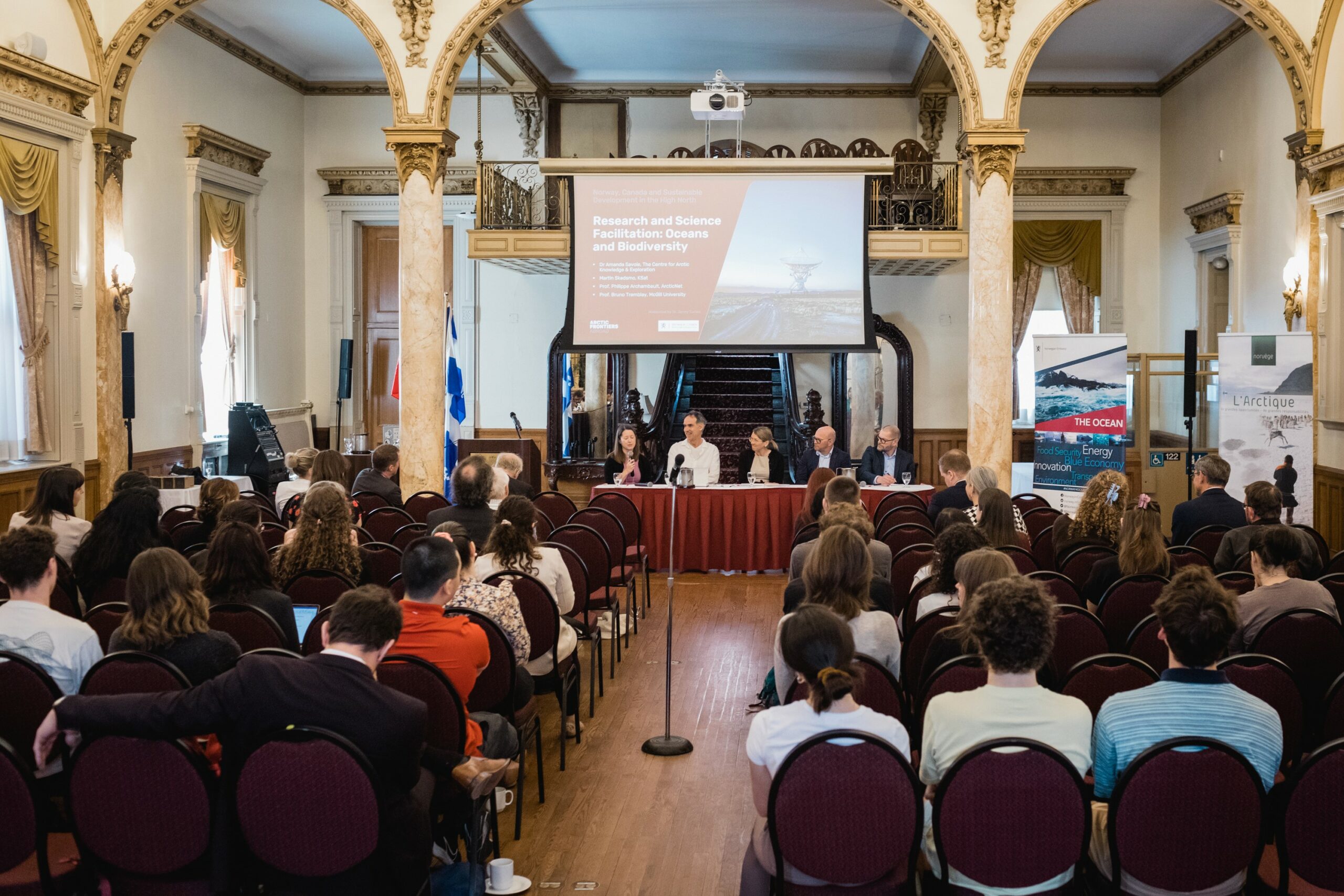
On May 12, McGill University co-hosted the final day of the Arctic Frontiers Summit in collaboration with the Royal Norwegian Embassy and Arctic Frontiers. Over 60 participants, including representatives from the governments of Canada, Norway, and Quebec, as well as McGill faculty, researchers, and students gathered in the McGill Faculty Club Ballroom to discuss science, policy, infrastructure, and business in the Arctic.
The event brought together two panels of experts – featuring McGill’s own Bruno Tremblay, Professor in the Department of Atmospheric and Oceanic Sciences, and George Wenzel, Professor Emeritus in the Department of Geography – to discuss the challenges currently facing the Arctic, and how collaborative efforts can lead to solutions.
An immediate issue
“The Arctic Front has become the catalyst for decision-making, and Canada has a significant role to play in it,” said Bruce Lennox, Dean of Science, during his opening remarks.
McGill’s own activity in the Arctic dates back decades and includes research at the McGill Arctic Research Station. Most of these initiatives work toward the same goal: advancing sustainability and combatting climate change, fields in which McGill has emerged as a leading institution.
Canada’s and Norway’s proximity to the Artic – Canada’s Arctic coast makes up 10 percent of total coastlines on the planet alone – means both countries are particularly sensitive to the impact of climate change in the North.
“The Arctic is warming at four times the rate of anywhere else on the planet,” noted Jenny Turton, Senior Advisor for Arctic Frontiers.
Collaborating on mutual interests

The first panel – made up of Bruno Tremblay, Amanda Savoie (Director, The Centre for Arctic Knowledge and Exploration at the Canadian Museum of Nature), Martin Skedsmo (KSAT), and Philippe Archambault (Scientific Director, ArcticNet) – discussed research infrastructure in the Arctic and the devastating impacts of climate change on the Arctic Ocean and biodiversity.
“We’ve seen extremely large changes in the Arctic since 2007. There are atmospheric and oceanic causes, but we observe that as CO2 emissions go down, the sea ice comes back,” Tremblay said.
Savoie touched on biodiversity in the Arctic, noting that immense amounts of baseline information still needed to be collected to get the full picture. Remote sensing, Savoie predicted, using satellite data of the kind provided by organisations such as KSAT, would have the power to expedite research by rapidly mapping large areas to identify appropriate locations to observe from the ground.
Oil spills were just one example cited at the summit of how climate change is impacting northern communities and neighbouring countries. As sea ice melts, oil spills spread faster across larger areas of ocean and coastline, meaning that a spill near Norway could impact communities in Greenland, and vice versa, to an increasingly alarming extent.
Building a network
The second panel, moderated by Anu Fredrikson (Executive Director of Arctic Frontiers), focused on new opportunities for research and industry to interact in the High North.
The speakers, Bjørn Tore Hjertaker (Professor at the University of Bergen), Michal Nilssen (Founder and CEO of Norskin), Audrey Lapenna (Technology Leadership Manager of Canada’s Ocean Supercluster) and George Wenzel, made repeated reference to the importance of collaboration and mutual learning in developing sustainable initiatives.
“Speaking with people in Inuit communities gives you a better perspective from which to operationalize your research,” said Wenzel, who began conducting research in the High North in 1971.
“Today, research is a bit different from when I began. Research isn’t as long-term anymore; I don’t think people spend 19 consecutive months in the field. However, it’s still important to meet people one-on-one and learn the community’s rules. Every community is different in the North. You need to know the social history, how and why they got to where they are today.”
“You can’t buy a network, you have to build a network,” said Nilssen, noting that different experts will have different approaches to a problem, and that bringing complementary resources together is the best path forward.
Learning to learn
A common thread for both panels was an increasing recognition of collaboration as a path to success. The panelists agreed that, when conducting research in the North, engaging with and learning from local communities was fundamental to predicting the impacts of climate change.
“A lot of science now is driven by local communities,” said Tremblay. “I no longer see it as researchers going to communities to show, but rather to sit down and learn.”
As Dean Lennox noted, the Arctic Frontiers Summit itself embodied that spirit of listening and learning.
“It was a pleasure seeing the guests engage in vivid discussions following the panelists’ debates addressing important aspects regarding the advancement of research, policy, infrastructure, and business in the High North,” he said.
